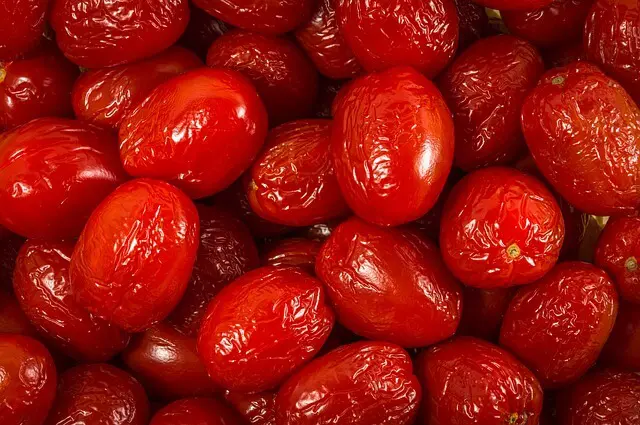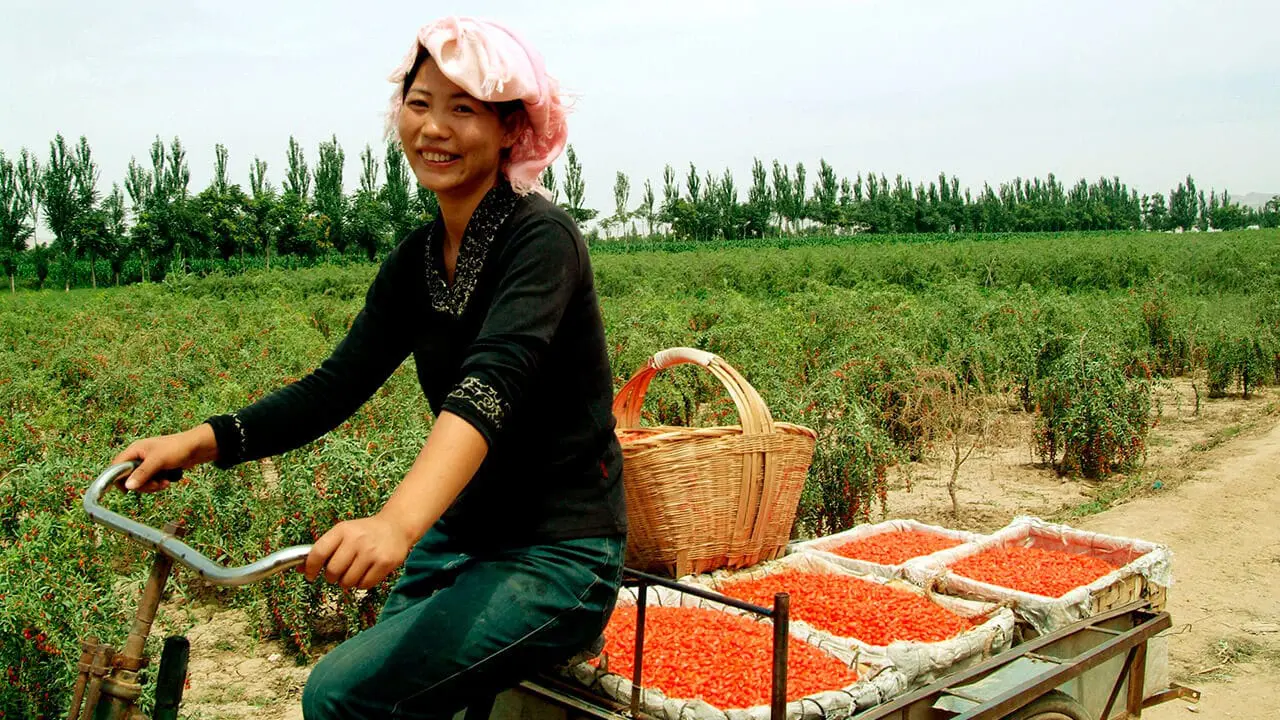Goji Berries (Lycium Barbarum), also known as Wolfberries, are native to China and have been used there, medicinally, for hundreds of years. The first written reference to goji berries was in Shen Nong Ben Cao Jung written around 200 BC. It has been used traditionally for strengthening the body, keeping fit, prolonging life, improving liver and kidney function, among other things. The flower, seed, leaf and root bark are also used medicinally. The berries are also used in Chinese cooking. L. Barbarum is also native to Europe, but there is no known history of consumption. Another species, L. Chinense is found in China, Nepal, Pakistan, Thailand and Europe.
Gojis are a good source of Vitamin C, Fiber, Iron, Vitamin A, Zinc, Selenium, phytochemicals and antioxidants.
The main growing areas in China are Ningxia and Xinjiang, with smaller amounts being grown in Inner Mongolia, Qinghai, Gansu, Shaanxi, Shanxi and Hubei. Our goji berries come primarily from Ningxia and Qinghai (located on the Tibetan Plateau) and are harvested at the peak of maturity. Our certified organic and conventional gojis come in various sizes, such as 160 ct (number of berries per 50 g), 220 ct, 280-300 ct and ungraded. We test every lot of organic berries that we receive to make sure that it is free of pesticides and meets our microbiological standards. Our conventional berries are very low in pesticides and have less than 10 ppm naturally occurring SO2.

We also make sure the moisture content is between 13-14% so the berries are moist and chewy, rather than hard and dry. We have been working with the same supplier in China for 10 years, in order to insure that we maintain consistent quality, flavor and color. We visit them regularly, to make sure that they adhere to our standards. They have been growing goji berries since 1998 and are the largest producer of organic gojis in China. In addition to being NOP organic, Kosher and Halal, they are also the only goji supplier in China that has a social audit. Other goji companies shop around for the best price and end up with varying consistency and quality.
Our normal pack size is 4/10 lb bags per carton, but other pack sizes are available on request. We can also supply gojis in standup, re-sealable, preprinted retail bags. We also carry freeze-dried goji powder and goji juice and goji juice concentrate is available by special order.
Freshly Picked Gojis
Our organic gojis are from Delingha, a grassland by Kelu lake at altitude of 3200m, (10,500 ft) which is located in Haixi Mongolia and Tibet autonomous prefecture, Qinghai, in the northwest of China. Delingha means golden world in Mongolia, this is an essential area for organic gojis to achieve organic standards, because of its special cold and dry climate, as well as high altitude that greatly reduces the risk of insects, thereby reducing the number of pesticide applications and pesticide toxicity.

China is one of the leading countries for organic products, and has a 2.1 million hectare organic planting base. The growing base is expanding by 10% annually. The annual production of 200,000 tons of gojis are grown on 1.6 million hectares.
The berries grow on shrubs, with an average height of 1.5m, some can be as high as 3m. Ours are processed as follows in our state-of-the-art facility:
First of all, mature and tender fresh berries are hand-picked, and only the best quality gojis are selected. Next, they are run through an air-separator to remove any foreign material. They then go through a metal detector to remove any metal fragments that might be present. Once that is complete they are spread out on trays and oven dried until the moisture content is reaches about 14%.
Traditionally, goji berries were sun-dried and there are still some companies that promote the fact that their gojis are sun-dried. There are a couple of reasons that we don’t do this with our gojis. First of all, it takes about one week in the sun for gojis to dry. This means the gojis are sitting outside, in the sun for a week and there is a risk of contamination by insects, pathogens or other foreign material. In addition, because of the fact that goji berries are different sizes, there is no way to achieve a uniform moisture content. This means that some gojis will be dry and hard and some will be too moist and could get moldy. Our gojis are dried in a sterile environment to prevent any type of contamination from insects or bacteria and the moisture content is controlled to about 13-14%.
After drying, the gojis are color selected to remove any residual foreign material, stems, leaves and other impurities. They then go through another metal detector to insure food safety. They are then packed in poly-lined cartons.

